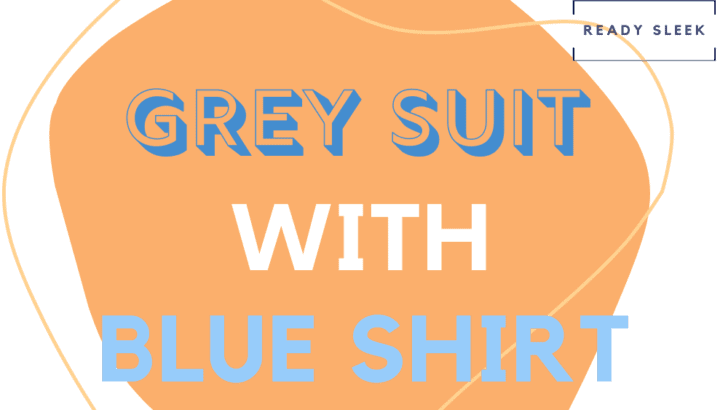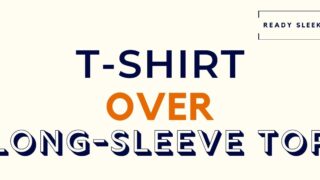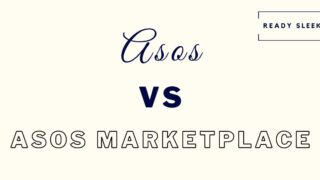Neutral-colored suits are versatile for several reasons – effortless color coordination is generally considered to be one of them. But can you wear a grey suit with a blue shirt?
Yes, it’s entirely possible to wear a grey suit with a blue shirt in both business-professional and smart-casual settings. Dark grey suits and light blue shirts would be the best option in business-professional environments. In smart-casual settings, you can experiment with the shades and fabrics.
While that’s the short and sweet answer, as always, it’s rarely going to be enough.
You’re about to read 7 essential tips for wearing this suit and shirt combination in the most impressive and effective way possible, each and every time.
Let’s get to it.

7 Tips For Wearing A Grey Suit With A Blue Shirt
Consider all of these before putting your outfit together. You’ll find all of them useful, but it’s likely that one or two will be super relevant to your specific circumstances.
Enjoy.
Check It’s Appropriate For The Setting
A grey suit and blue shirt combination is pretty versatile but won’t be appropriate for every setting.
Here’s a list of potential dress codes it would be suitable for:
- Business-Professional
- Smart-Casual
Here’s a list of dress codes it probably won’t be suitable for:
- Black-Tie
- Formal
- Business-Casual
This may surprise some of you, but let me explain. The easiest way to do so would be to go through the inappropriate dress codes first.
Black-Tie is one where a tuxedo would be required. That immediately rules out a grey suit and blue shirt combination.
Easy.
But what about a “formal” dress code? After all, what’s more formal than a suit?
Ultimately, a grey suit may be appropriate for a formal setting – especially a dark grey suit (eg. charcoal).
But a blue shirt usually wouldn’t be suitable for a truly formal setting. Stick to plain white dress shirts instead.
Finally, the business-casual dress code usually discourages suits altogether – stick to chinos/dress pants + OCBD + blazer/sport coat combinations instead.
Now, let’s talk about the suitable dress codes:
A grey suit and blue shirt combination is ideal for business-professional settings such as corporate workplaces. Of course, the type of suit/shirt you wear is crucial here, but we’ll talk more about this in the other tips.
It would also be fine in smart-casual settings where you’ve got way more freedom to experiment with color.
Consider The Shades Of Grey And Blue
So, we’ve determined that a grey suit and blue shirt would be most suitable for business-professional settings, as well as smart-casual ones.
Now it’s time to talk about how the setting/dress code should influence the type of grey suit and blue shirt you choose.
Let’s start with the shades of grey and blue.
As always, I love to keep things simple:
- The darker the shade of the grey suit, the dressier it’ll look.
- The lighter the shade of the blue shirt, the dressier it’ll look.
Business-professional is definitely the dressier of the two “appropriate” dress codes.
When dressing for a business-professional setting, your best option would be to go for a dark grey suit and a light blue shirt.
It doesn’t get much more professional than that. Having said that, if you do work in an especially strict and stiff work setting, consider whether a white dress shirt would be a safer choice.
Now, let’s talk about the smart-casual dress code.
Here, you’ve got a lot more freedom to experiment with the shades of your grey suit and blue shirt.

Let’s run through some examples of combinations you could try out:
| Light Grey Suit | Navy Blue Shirt |
| Slate Grey Suit | Royal Blue Shirt |
| Dark Grey Suit | Baby Blue Shirt |
| Charcoal Grey Suit | Sky Blue Shirt |
As you can see, there are plenty of different combinations you could come up with by mixing light/medium/dark shades of a grey suit with light/medium/dark shades of a blue shirt.

While a dark grey suit will always look dressier than a light grey suit, the addition of a dark blue shirt (eg. navy or midnight blue) will immediately dress down the outfit.
Any of them could work in a smart-casual setting.
Consider The Fabrics And Styles Of Each Item
The style of the grey suit and blue shirt is also very important to consider. The combination can look very different depending on what you choose.
Let’s talk about the grey suit first.

Image From Deposit Photos
The fabric you choose will definitely make it look more formal or casual.
Once again, let’s keep things simple.
- The smoother and more wrinkle-resistant the texture of your grey suit, the more formal it’ll generally look. Examples include sharkskin and (more commonly) worsted wool.
- The more rough, rugged, or wrinkly the texture of your grey suit, the more casual it’ll look. Examples – tweed, herringbone, flannel, linen.
While the suit texture, in my opinion, is the most important factor when it comes to formality, there are other features a “formal” grey suit is likely to have.
For example, they’re likely to have more structure and padded shoulders. They’re also less likely to have “casual” features such as elbow patches and patch pockets.
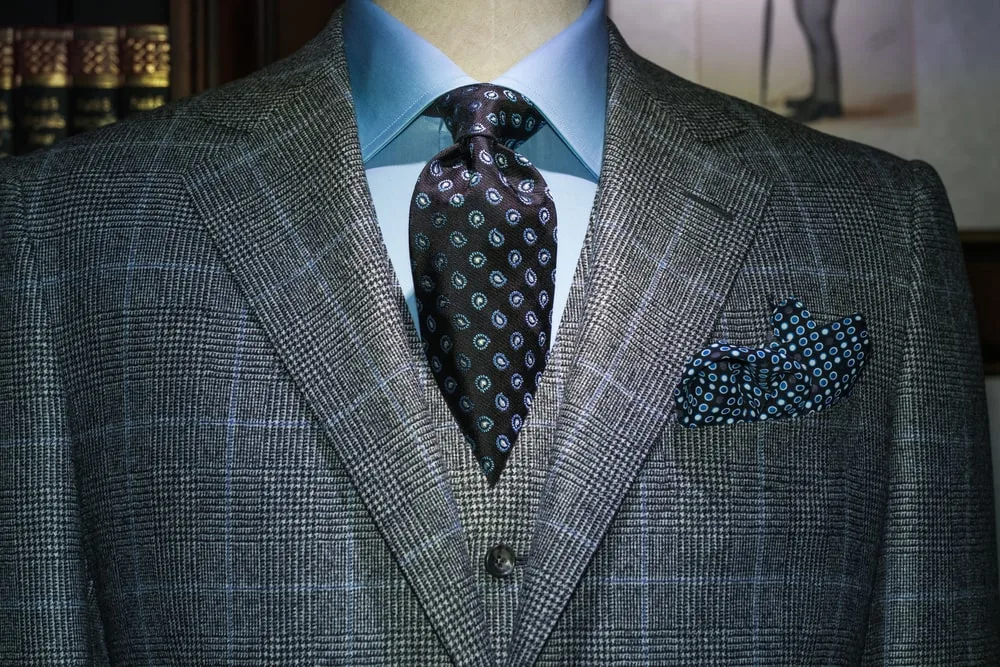
Image From Deposit Photos
When it comes to the texture of the blue shirt, the same principles apply.
Smooth + wrinkle resistant = Dressier. Eg. Poplin or twill weave cotton shirts.
Rough, rugged, or wrinkly = More casual. Eg. OCBDs, linen, and chambray shirts.
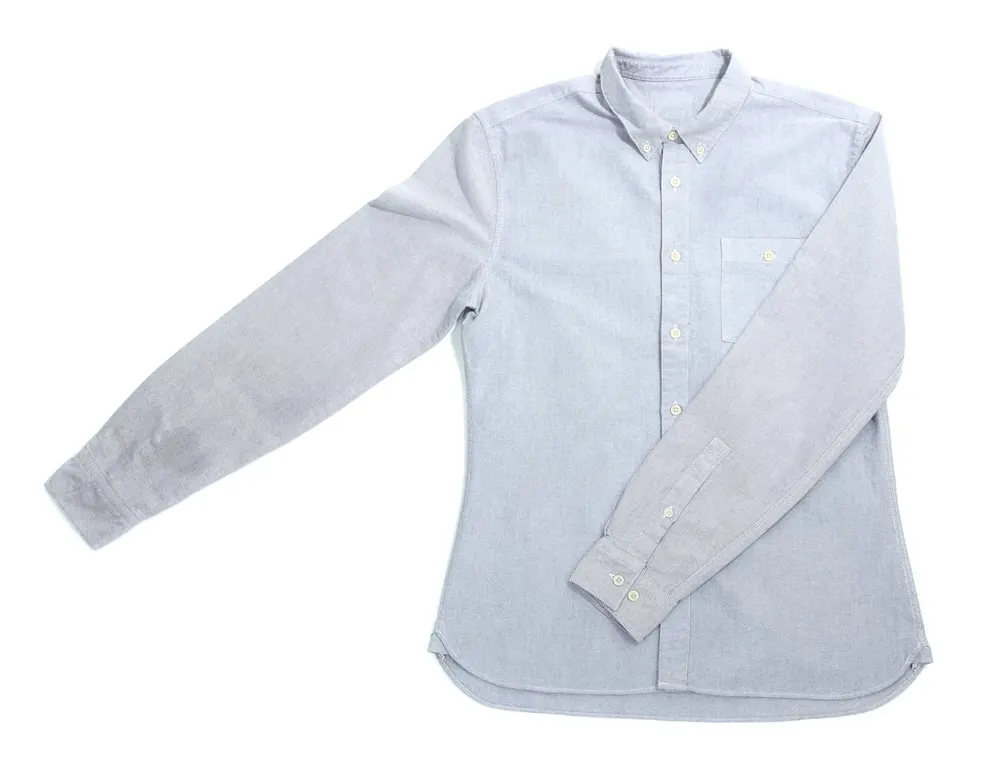
Image From Deposit Photos
Blue dress shirts are also more likely to have stiff collars, cutaway collars, French cuffs, and other “formal” features.
So, when putting together your ideal grey suit and blue shirt combination, consider the dress code and pick an appropriate suit and an appropriate shirt for the setting.
For a business-professional setting, you’d do well by going for a worsted wool charcoal grey suit with a light blue cotton dress shirt.
In a smart-casual setting, feel free to experiment with both the color and the fabric of both items.
The Tie Color Matters
When wearing a grey suit with a blue shirt, you could wear a neutral-colored tie such as black or grey to keep things simple. Alternatively, consider a dark and muted shade of green, red, or pink to add a touch of color.
Remember, the blue of your shirt isn’t neutral and does need to be coordinated with the tie.
You don’t want to haphazardly add yet another color into the mix without giving it some thought.
The simplest option would be to wear a neutral tie as they’ll coordinate seamlessly and keep things subtle.
This is ideal in business-professional settings where underdressing will always be a risk.
In smart-casual settings where you’ve got more freedom to experiment with color, you could consider a more vibrant color.
But be careful with the shade.
To keep things subtle, keep it dark and muted.
So, instead of scarlet red, go for burgundy, maroon, or crimson.
Instead of mint or chartreuse green, go for sage, forest, or olive green.
Finally, instead of blush or dusty pink, consider salmon.
One last thing to note:
When wearing a grey suit and a blue shirt to a smart-casual setting, ask yourself whether a tie is really necessary in the first place.
It may well be best to embrace the casual look and just go tieless leaving one or two buttons undone
This is especially true if you’re wearing a dark blue shirt, as dark-colored shirts are notoriously difficult to coordinate with ties.
Brown Shoes Generally Work Best
The grey suit and blue shirt combination works very well with brown dress shoes. Dark brown shoes would be ideal in business-professional settings, while shoes in lighter shades of brown (eg. tan) would be ideal in smart-casual settings.
Brown isn’t the only choice, however.
Feel free to go for black shoes, especially in stiff business-professional settings.
What I love about brown shoes is that they add a touch of warmth to an otherwise cool/neutral color combination (grey and blue).
The contrast you get with a pair of brown shoes is subtle but noticeable enough to add a layer of visual interest to the outfit.
The lighter the shade of the brown shoes, the more “warm” and vibrant they’ll feel.
In terms of the style of brown or black shoes you choose, let the dress code guide you.
Oxfords and Derbys would be the obvious choice in business-professional settings, but monk straps would usually be fine too.
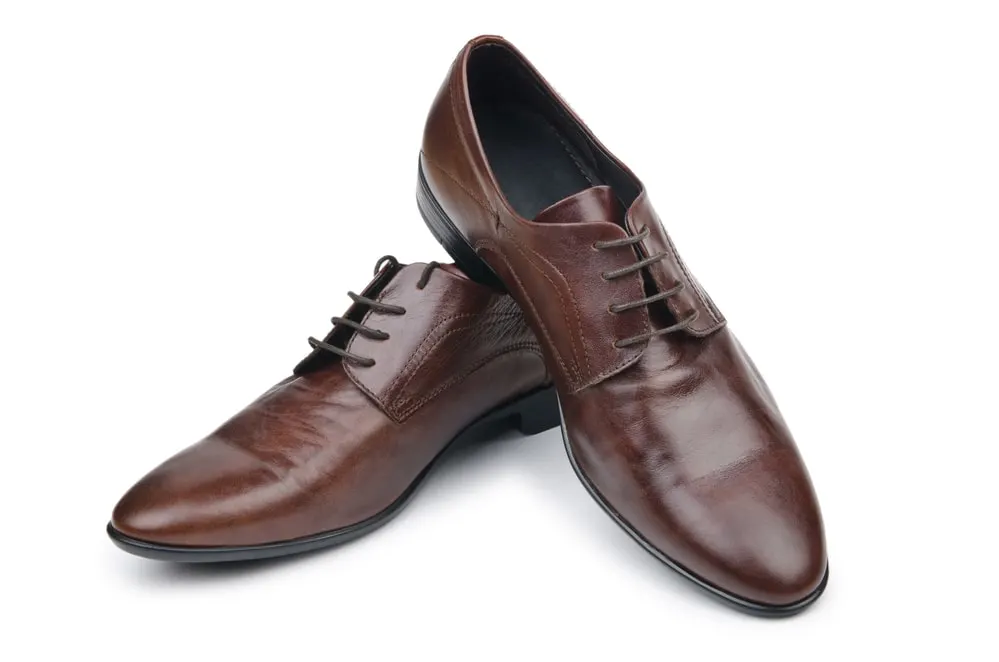
Image From Deposit Photos
In smart-casual settings, consider a pair of loafers during the warmer months of the year. During the colder months, suede chukka boots can work a treat too.
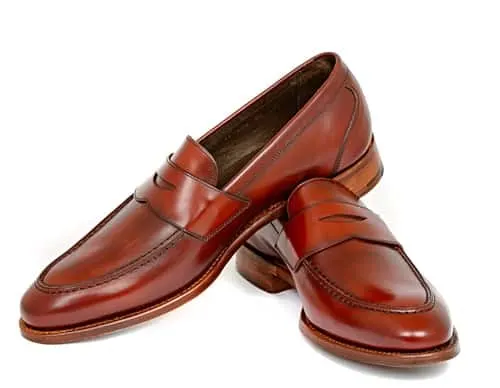
Image From Shutterstock
Finally, sneakers shouldn’t be completely disregarded when wearing a grey suit and a blue shirt in a truly smart-casual setting.
This look isn’t for the faint of heart and definitely isn’t without its haters.
But a pair of simple, all-white leather low-top sneakers can work well when wearing a casual grey suit and blue shirt combination.
Try and pull it off with a worsted wool charcoal suit, however, and you’d usually be laughed out of the office.
Patterns Only If Appropriate
Consider incorporating patterns into your grey suit and blue shirt combination if this is an option for you. It should generally be avoided in business-professional settings where solid colors would be the safer option.
Patterned suits should be fairly low down on your wardrobe priority list. You’d be much better off starting with a well-fitted solid-colored charcoal or slate grey suit to start off with.
It’s much easier (and cheaper) to incorporate patterns into your outfit with your blue shirt.
Stripes are the most versatile, in my opinion. You definitely aren’t short of options when it comes to the type of stripes you could go for.
Pinstripes, chalk stripes, Bengal stripes – it can get overwhelming.
Ultimately, it doesn’t matter.
The main points are:
- Patterned shirts generally work best in smart-casual settings. Go for solid colors in business-professional/formal ones.
- If you do go for a pattern, try to stick to one pattern only. If you’re wearing a patterned shirt, keep the suit and tie solid-colored. If you’re wearing a patterned suit, keep the shirt and tie solid-colored.
This isn’t a hard-and-fast rule, however. It’s just the simplest way to incorporate patterns when you’re just starting out.
Finish Up With A Pocket Square
A pocket square is a simple way to add a touch of sophistication to a grey suit and blue shirt combination in smart-casual settings.
In general, however, it’s best to avoid them in business-professional settings (eg. corporate workplaces).
It’s much less commonly seen and will generally come across as either eccentric or pretentious.
But smart-casual settings are going to be social. Adding a touch of flair and personality to your grey suit and blue shirt combo is going to be encouraged.
There’s no easier way to do this than by adding a pocket square.
As it’s a casual setting, you’ve also got some choice when it comes to the color of your pocket square.
If you’re wearing a tie, consider coordinating it with the tie. If you’re not wearing a tie, try to coordinate it with the shirt.
To keep things simple, you could go for a completely neutral pocket square color such as white or grey.
But if you wanted to add a splash of color, refer to the color wheel. It’s easy – trust me.
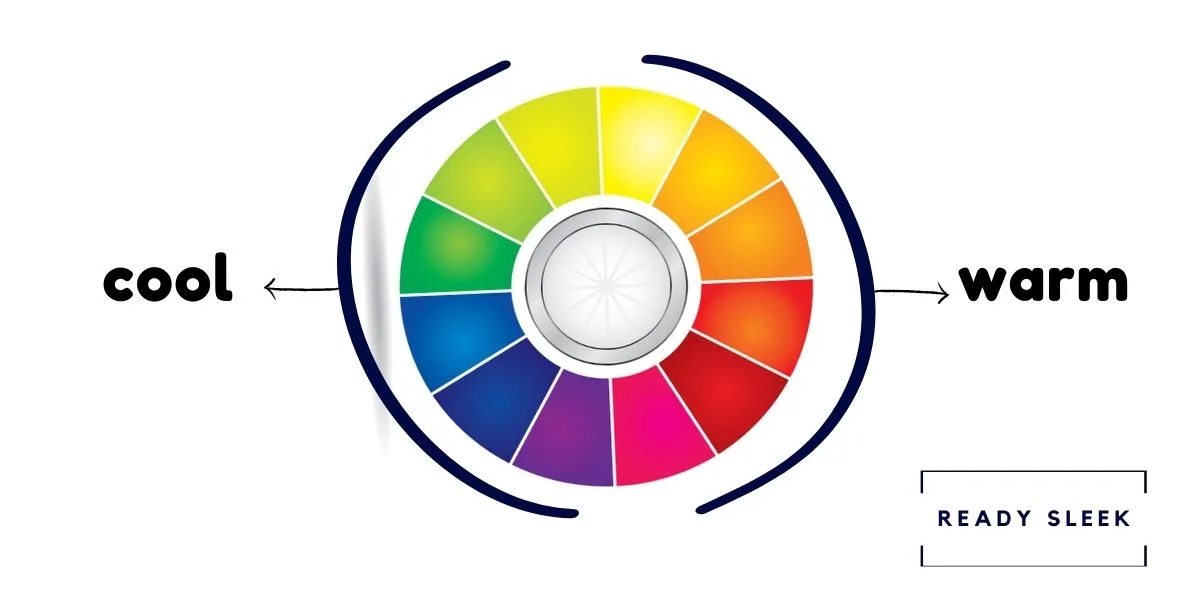
Let’s assume you’re not wearing a tie and we’re simply coordinating the pocket square with the blue shirt.
You could go for a “monochromatic” color combination by simply choosing a pocket square in a different shade of blue.
Alternatively, you could go for an “analogous” color combination by choosing a pocket square in a color that’s close to blue on the color wheel such as a shade of green or purple.
Finally, if you really want to add some attention-grabbing spice to your suit, try a “complementary” color combination by choosing an orange pocket square.
Orange and blue are opposite each other on the color wheel and the high contrast produced by combining the two will work but will always catch the eye.
Try to stick to muted shades, however, to avoid coming across as too flamboyant. It’s hard to go wrong with burnt orange, for example.
Ready Sleek founder. Obsessed with casual style and the minimalist approach to building a highly functional wardrobe. Also a fan of classic, vintage hairstyles.

